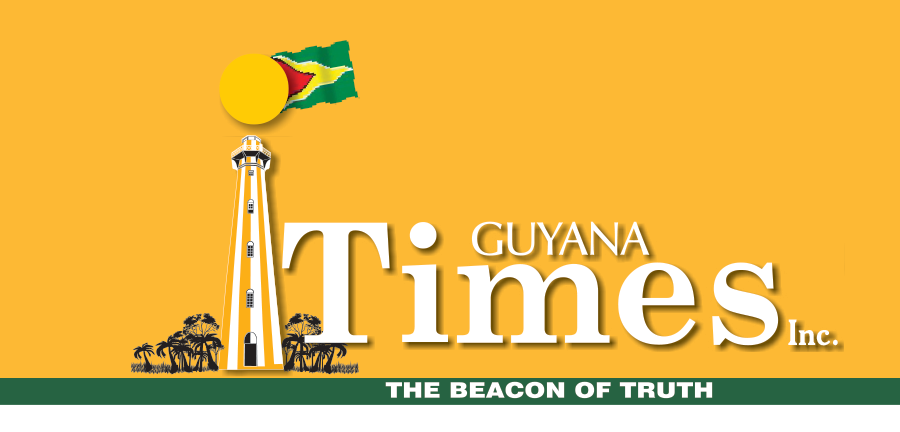…urges continued US dialogue to safeguard local industry
Following the United States (US) slashing the reciprocal tariff imposed on Guyana from 38 per cent to now 15 per cent, the local private sector has welcomed the reduction but urges continued dialogue to further ease the impact this could have on Guyanese exporters.

On Thursday evening, the White House released a document to show that the 38 per cent reciprocal tariff announced for Guyana in April has now been reduced to 15 per cent.
Chairman of the Private Sector Commission (PSC), Captain Gerald Gouveia Jr, has acknowledged this adjustment, telling the Guyana Times on Friday that they are still hopeful of a further reduction.
“While we respect the right of every country to set its trade policy, we are mindful of the potential impact this may have on Guyana’s emerging non-oil export sectors like agriculture, agro-processing, and manufacturing,” he noted.
According to the PSC Chairman, the tariff imposition comes at a time when Guyana is working hard to diversify its economy and expand export markets. He pointed out that this tariff will put pressure on local small, medium, and large businesses that are seeking to remain competitive in the US market.
To this end, Gouveia Jr urged the Guyana Government to continue dialogue with US authorities so that the 15 per cent tariff could be further adjusted.
“We are hopeful that this matter can be addressed through constant dialogue between our two countries. We encourage the Government of Guyana to continue its dialogue with the USA toward negotiating sector-specific exemptions or finding more favourable terms that can continue to build our long-term partnership between the nations.”
“The Private Sector Commission remains committed to supporting efforts to protect Guyanese jobs, export opportunities, and price stability while preserving strong, respectful trade relations with all global partners,” the PSC head stated.
Meanwhile, similar sentiments were expressed by the Guyana Manufacturing and Services Association (GMSA), which also expressed appreciation to the Government for its active engagement and representation throughout the negotiation process with the US to secure a reduction.
“The Association further acknowledges that discussions are ongoing and expresses its full support for continued diplomatic and trade efforts aimed at securing additional tariff reductions. The GMSA remains committed to advocating for the interests of local manufacturers and service providers and will continue to work with national and international partners to unlock new trade opportunities for Guyanese businesses,” the GMSA said in a statement on Friday.
Back in April, the US had initially announced a 38 per cent reciprocal tariff on goods from Guyana, but this was later slashed to an across-the-board 10 per cent pending the August 1 rollout of the new tariff rates.
Following the announcement of the new 15 per cent tariff rate, Vice President (VP) Bharrat Jagdeo told this newspaper on Thursday evening that the Government of Guyana was very pleased that there was a downward adjustment. He added, however, that Guyana is still engaged in discussions with US authorities and is hopeful that the tariff will be adjusted back to 10 per cent.
In fact, speaking on the issue earlier on Thursday at his weekly press conference, the VP stated that Guyana had already submitted documents to the US Trade Representative’s Office regarding the tariffs and that the US authorities understood that the surplus was largely from oil exports.
“They know that it’s almost entirely from the export of oil into the US. So given that, I think… they’ve approached this matter differently… Now, unlike with some other countries, which I think take a harder line, they understood that the [Guyana’s] surplus is as a result of the oil export, not any unfair currency practices or protective barriers in Guyana that have led to that situation, which they accuse other countries of. So given that goodwill there and the understanding, I anticipate that we should have a favourable outcome,” Jagdeo told reporters earlier on Thursday.
Currently, US-based oil major ExxonMobil and its co-venturers are conducting oil production activities offshore Guyana in the Stabroek Block.
Back in April, Guyana had been included on a list of countries facing reciprocal tariffs from the US, a measure that, once implemented, could have seen the cost of doing business increase and had resulted in the Government of Guyana reaching out to its partners in the US, seeking answers.
According to a chart US President Donald Trump read from, Guyana had a 38 per cent reciprocal tariff rate applied to its exports to the US in response to the 76 per cent tariff that Guyana was listed as imposing on US products. However, the US then put a 90-day pause on the increased tariffs with an across-the-board 10 per cent.
In May, Senior Minister with responsibility for Finance, Dr Ashni Singh, and a team from Guyana met with the US Trade Representative, Ambassador Jameson Greer, to discuss the tariff. At the time, Jagdeo had revealed that the meeting focused on explaining the economic context of the surplus, including the nascent nature of Guyana’s oil and gas industry and the dominant role US companies play in its development.
Discover more from Guyana Times
Subscribe to get the latest posts sent to your email.











